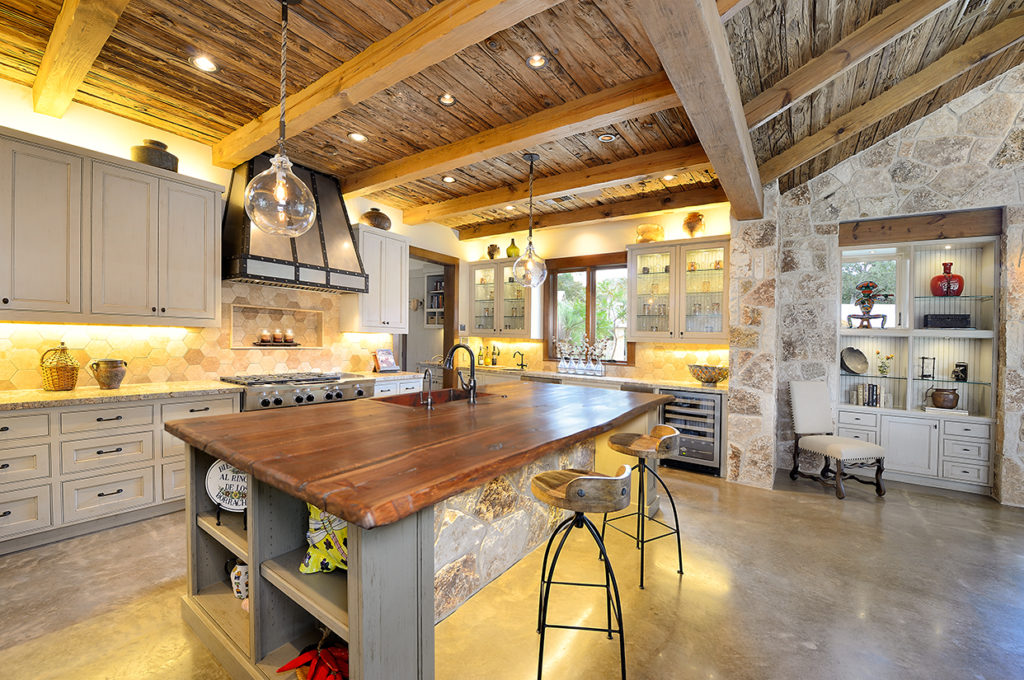
The Texas-based architect behind Rancho Sin Nombre shares some expert advice for working with concrete. Hint: Concrete installation is not a DIY project.
Rick Burleson is the founder of Burleson Design Group, an architecture firm located in Wimberley, Texas. In our February/March 2018 issue, Burleson told us about the work he did on Rancho Sin Nombre, a Houston family’s getaway outside of town. For that property, he specifically utilized concrete flooring for its durability — a necessity when it comes to Texas ranches. To find out more about when and where else this functional flooring works best, we asked Burleson his thoughts on the tried-and-true yet oh-so-trendy material.
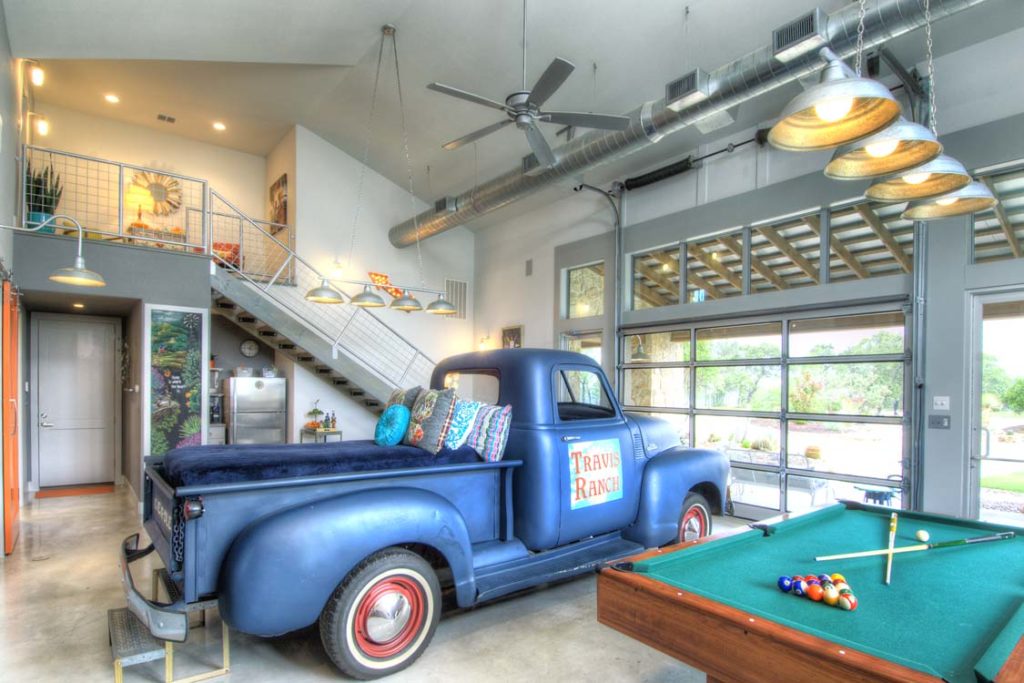
Cowboys & Indians: Where does concrete flooring work best?
Rick Burleson: Many homes we design have exposed concrete floors throughout — in every room. Generally a client either likes it and wants it everywhere or they don’t want it at all. Typically, our concrete floors are acid-stained and polished. Sometimes they are honed and sometimes they are scored. All of our work is in the central region of Texas and slabs don’t get extremely cold even in winter. But we have imbedded radiant heating within bathroom slabs to warm the floors.
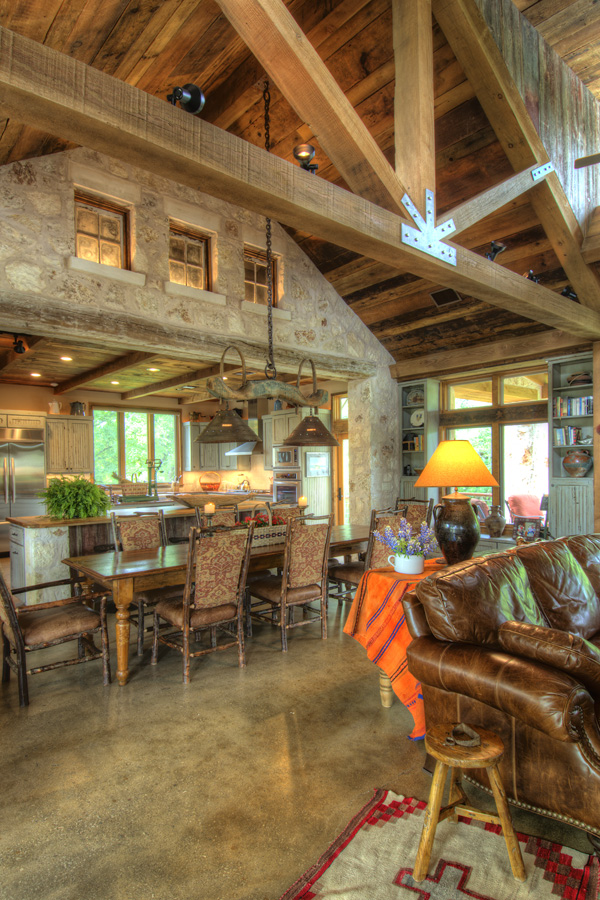
C&I: What uses other than flooring is concrete best suited for?
RB: Exposed board-formed concrete creates a nice finish. We utilize this technique where concrete foundation walls are exposed. Exposed concrete also looks great at countertops, retaining walls, and fireplaces. An experienced and qualified concrete installer is critical to get the right look.
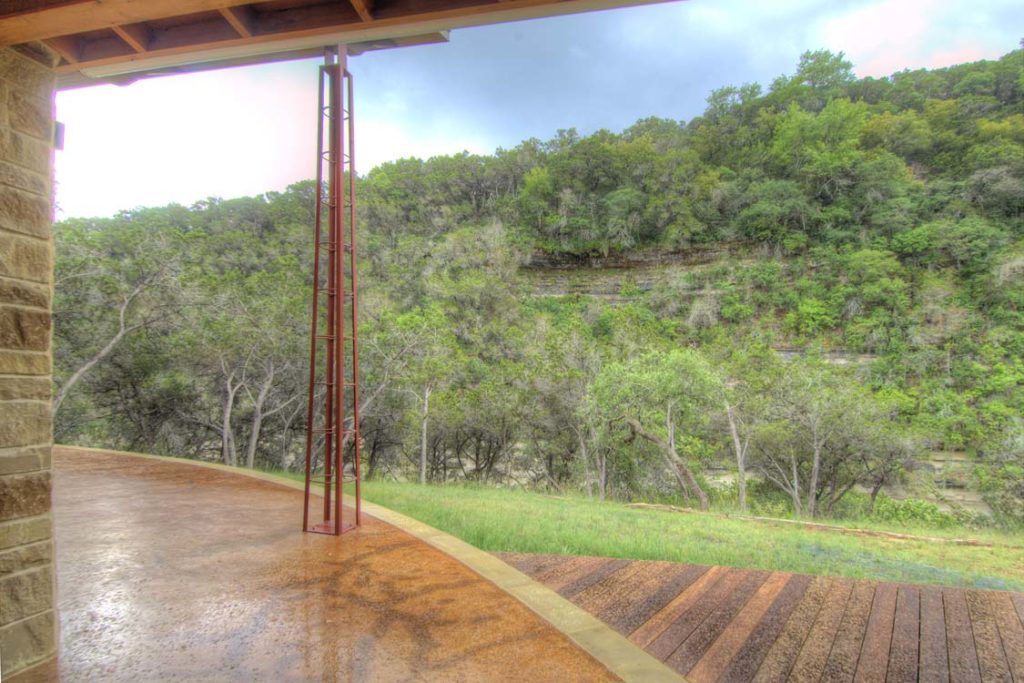
C&I: What exactly makes concrete as a floor surface so low-maintenance?
RB: Concrete is a very durable material especially when it’s polished. Also, part of the beauty is its subtle inconsistencies — like any natural material. This makes it accepting of wear and tear.
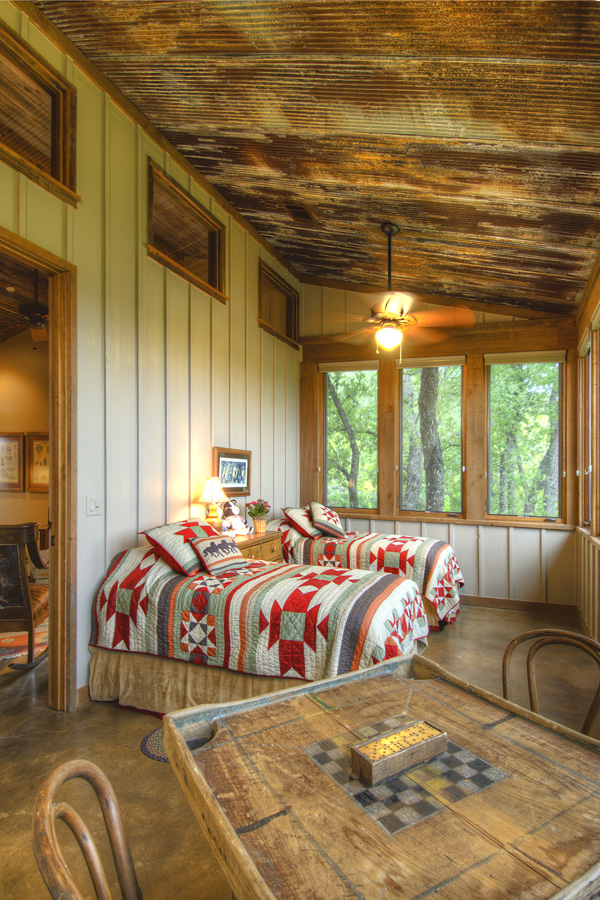
C&I: What are the ups and downs of the concrete installation process?
RB: There are several critical parts to the process. The first is the quality of the concrete slab surface. Special care must be taken by the foundation contractor in finishing the concrete. A smooth surface is necessary, with minimal trowel marks. Then the concrete surface must be protected during construction so it’s not chipped, stained, or otherwise marred. All of the subcontractors have to take care. The concrete finisher is the final critical component. Expertise is needed to determine how to produce the best finished product with any given slab. For instance, the floor might have to be honed before the stain is applied, depending on the quality of the slab finish. Concrete finishing is an art.
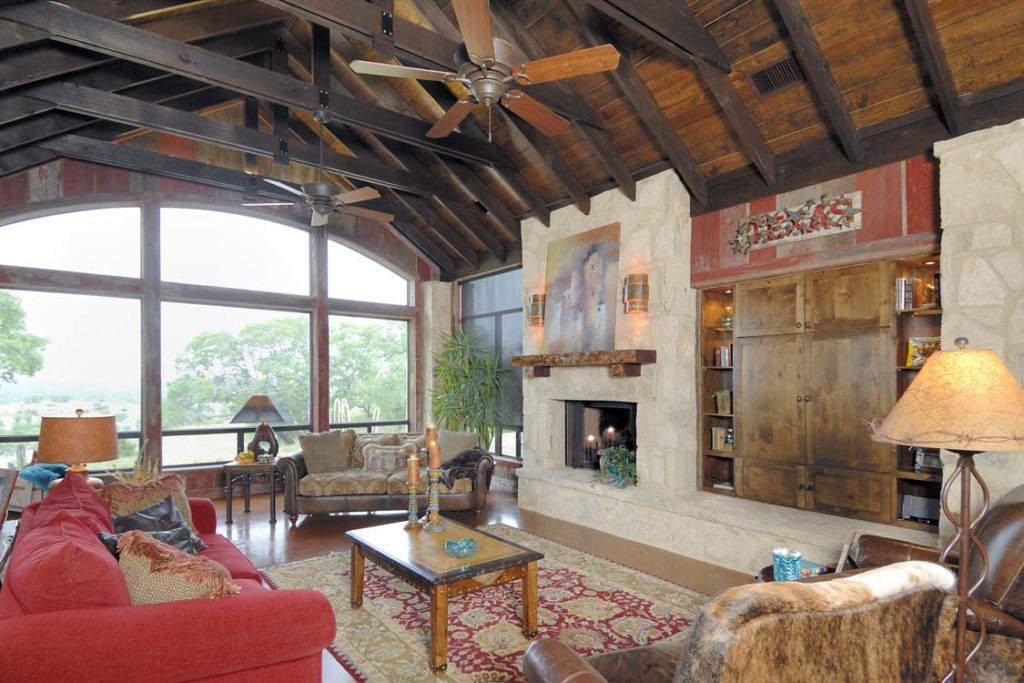
C&I: What are the different styles and colors of concrete available for residential design?
RB: Color blending is part of the art of finishing. There is no limit to possible colors, though recently we have trended toward minimally added color to allow the natural color of concrete to come through. Especially if slightly honed to expose the aggregate, concrete has a subtle and beautiful array of colors.
Read more about Burleson in Wide Open Spaces, from our February/March 2018 issue. Photography: (All images) Courtesy Burleson Design Group
More Home & Ranch:
The Secrets of Great Design
On The Market: LBJ’s Old Ranch
Bring It Home: Stock The Bar













